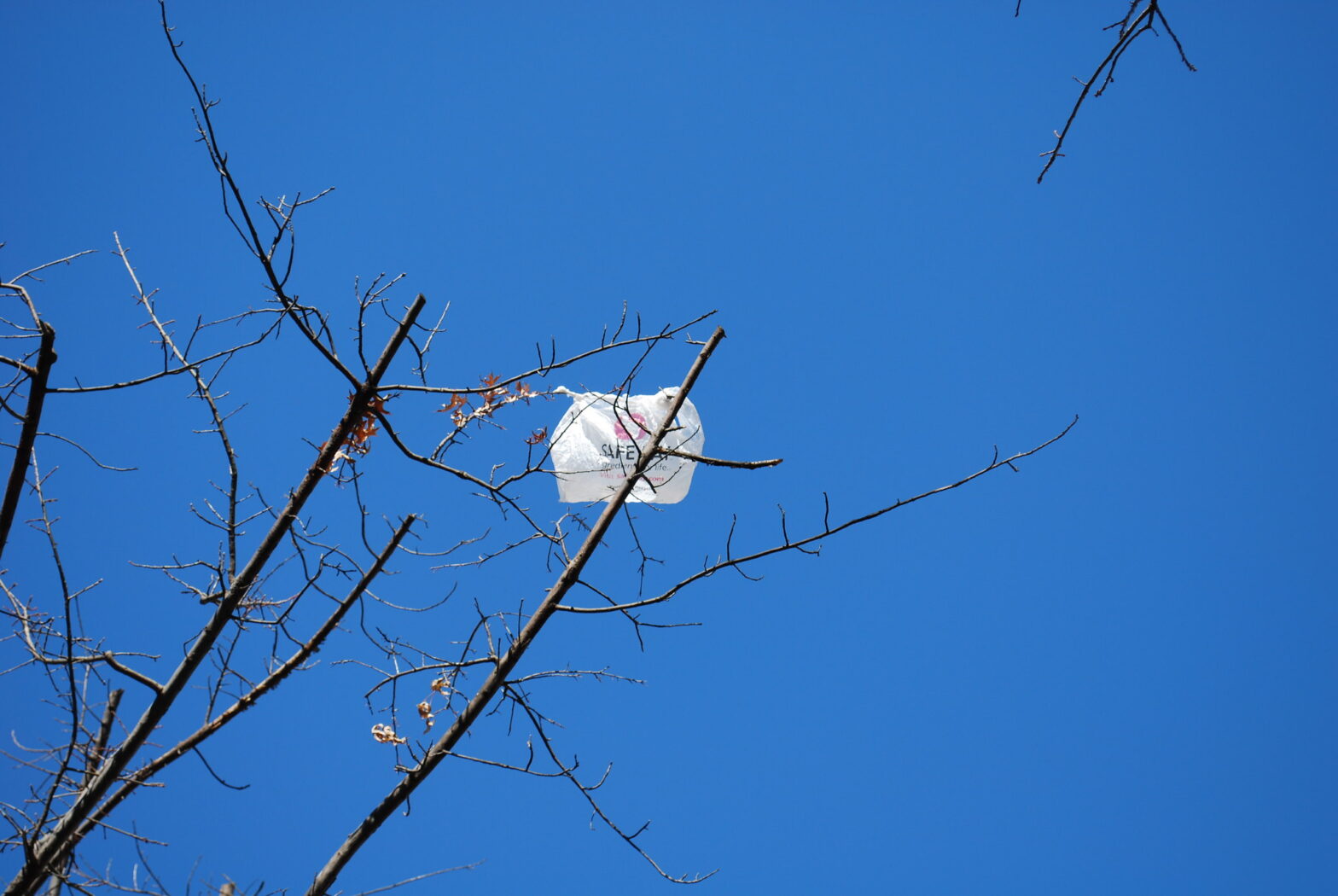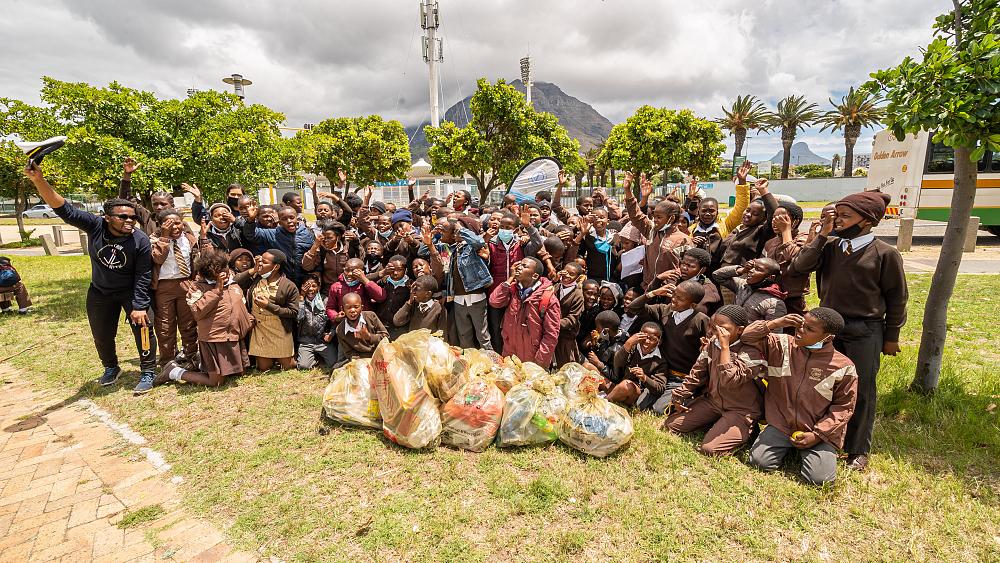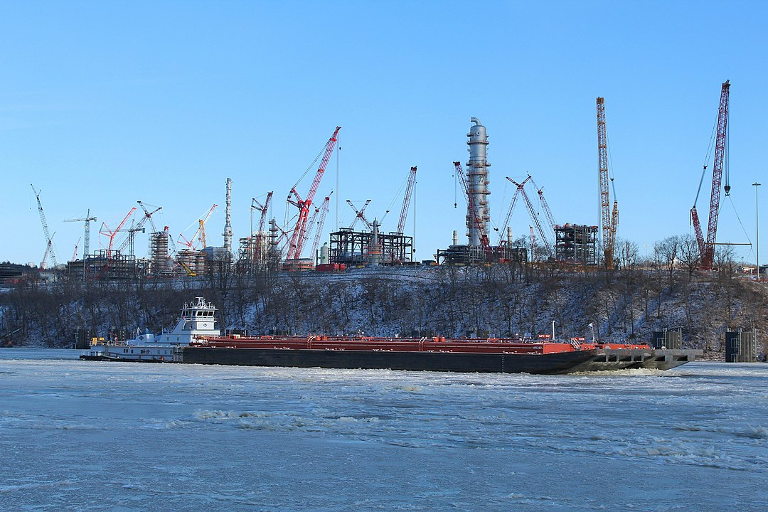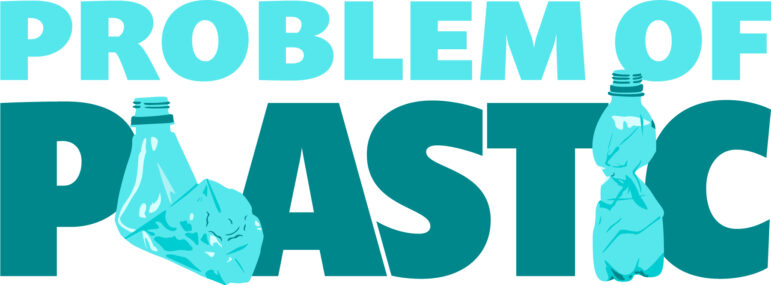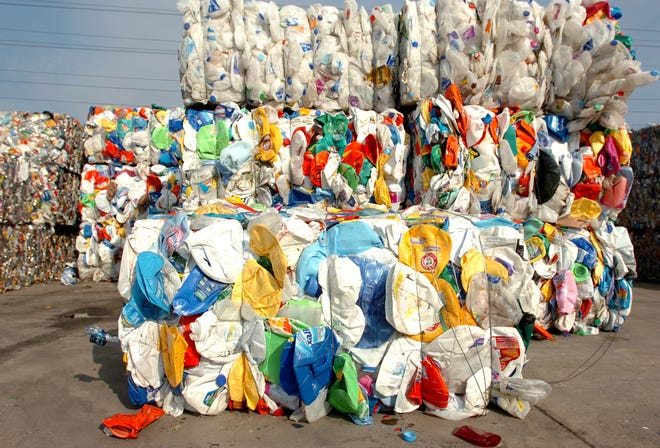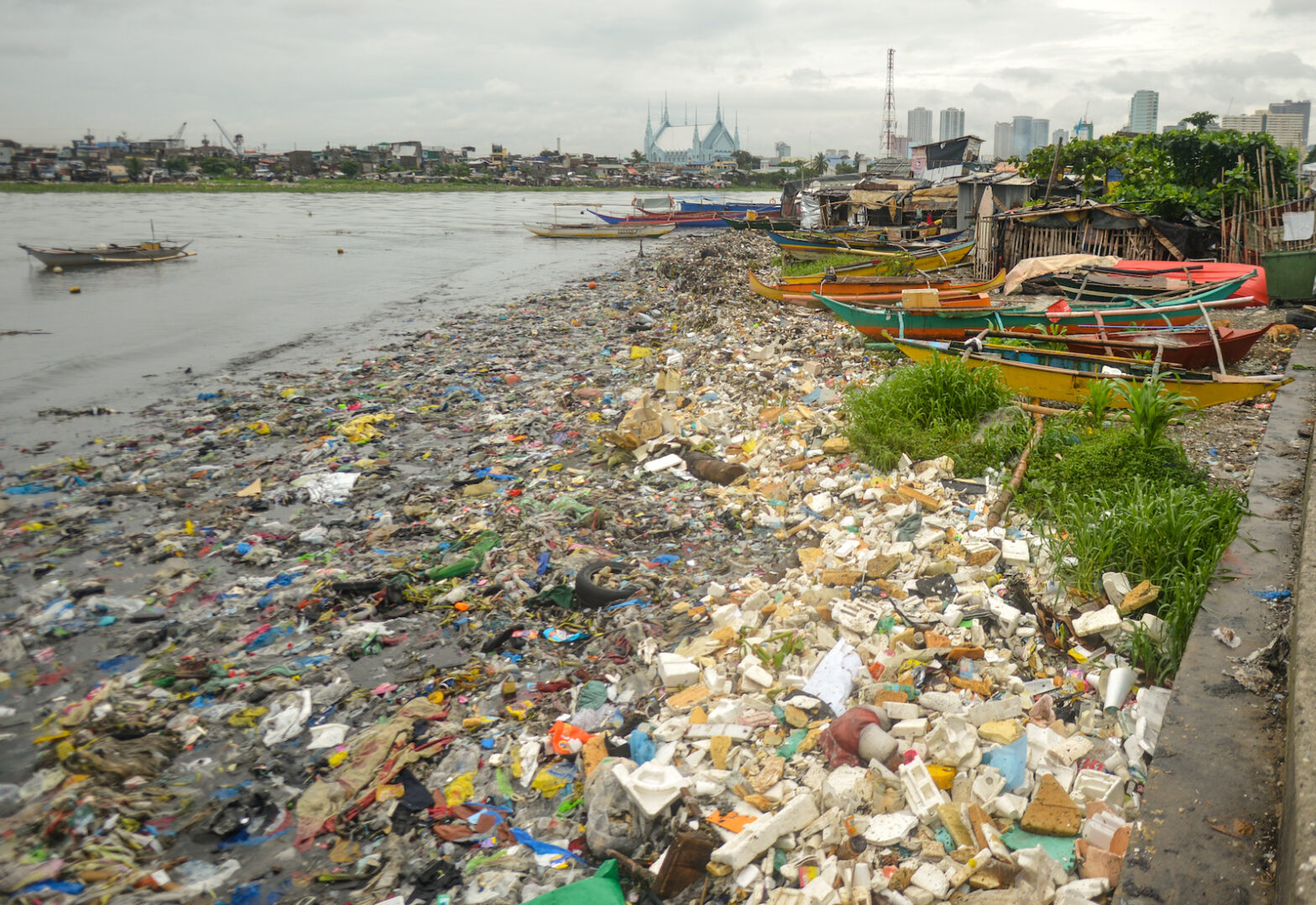Most waste decisions are out of reach of consumers, who have the packaging chosen for them by manufacturers
When shoppers go to the store for shampoo or strawberries or cereal, they have the choice between brands and ingredients and even different prices, but there’s one major thing consumers can’t often choose: how those goods come packaged.
Long before an item lands on the supermarket shelf, its makers have chosen the cardboard box and the plastic or metal bag inside keeping food fresh. They’ve chosen which type of plastic clamshell will keep berries from getting smashed on the way to the fridge. They’ve selected which type of glass or plastic or compostable material will hold your hair care products on the shelf for weeks or months without falling apart.
This is the first story in a new series by InvestigateWest examining one of the most problematic pollutants of the 21st century: plastic. This series was funded in part by the Sustainable Path Foundation.
With arrows and numbers somewhere on the package, they’ve told consumers whether that material might be recyclable. But it’s up to individuals to make sure that little number on the bottom denotes something that is actually accepted for recycling in their area. Then, busy people are asked to make split-second decisions about which bin something belongs in, often with little idea whether that material will actually get used again, or simply end up as garbage.
“We as consumers are stuck with the packaging decision that somebody else has made,” says Washington state Sen. Mona Das, D-Kent, whom some have deemed the “single-use plastics warrior” for her work combating waste. “And then we as consumers have to figure out what to do with packaging, whether it’s plastic or glass or aluminum or … Styrofoam.”
Das is one of several Pacific Northwest lawmakers who’ve pressed for nation-leading legislation that would require companies to pay for the recycling programs needed to deal with the packaging choices they make. It’s a move that about a dozen other states have also considered as they tackle their recycling and waste streams.
When consumers don’t know exactly what to do with all that packaging, they often do what’s called “wishful recycling,” tossing those containers into the recycling bin in hopes that they ultimately get recycled, Das says.
That creates serious problems.
At local materials recovery facilities, people and optical robots work at a breakneck pace to separate garbage from recyclable materials. Despite their best efforts, they end up baling some of that contamination in with the plastics, metals and cardboard and then sell to places that can process those materials and turn them back into products or new packaging.
Until about five years ago, much of the world shipped those contaminated bales to China, where they could be recycled and made into new products. But then China shut the door to all but the most pristine bales in an effort to reduce air pollution from burning the leftover garbage, and to focus on better recycling the materials used and created within its own borders.
Suddenly, people around the world, including in the Pacific Northwest, had to figure out how to recycle all that packaging somewhere else. Some recycling programs at the city and county level stopped collecting entire categories of materials, and the companies and sorting centers in charge of waste streams went on the hunt for other markets.
Washington’s Department of Ecology found in 2018 that less than half of the 13.2 pounds of waste created per resident each day was recovered for recycling, for composting or to be burned for energy. That adds up quickly in a state with more than 7.4 million people, particularly as the amount of plastic and other waste created per person is increasing over time — in 2000, it was more like 9.7 pounds per resident each day.
But there’s something many other countries have already figured out: You can make the companies that sell products in your area pay to ensure their packaging is either recycled, reused or composted, and in doing so, you can greatly increase that recovery rate and reduce how much goes to waste.
What’s the magic solution? Industry experts call it an “Extended Producer Responsibility” or EPR.
In 2021, Maine and Oregon became the first states in the country to pass such legislation. They are already starting to figure out the rules of their own EPR programs, and while the Washington Legislature failed to vote on a similar bill before its session ended in March, negotiations with manufacturers in the Evergreen State may be helping other states push similar programs forward.
PASSING THE BUCK BACK
The basic way EPR programs function is by requiring producers to pay into a “producer responsibility organization” or a PRO that ensures their materials are recycled properly. The PRO negotiates collection costs, ensures that pickup is happening where it needs to, and ultimately sells the collected products to end markets for recycling or reuse.
By keeping the programs “material neutral,” states can ensure that different types of packaging all meet standards for recycling, reuse or composting. But if your material is harder to recycle, the PRO will charge you more for the extra labor.
PROs already exist in many states around the country, including Washington and Oregon, to handle the recycling and reusing of things such as electronics, paint, fluorescent lightbulbs and more, but packaging is a category that has yet to be widely addressed in the United States.
Key to the programs’ success is ensuring that people across the state have access to recycling.
Das’ Senate Bill 5697 would have required manufacturers, brands and/or the businesses first distributing packaged products in the state to pay into packaging PROs in Washington. The bill also would have ensured that rural communities with garbage collection also have recycling collection.
That was one point of interest for the Association of Washington Cities, as many municipalities operate their own waste-collection systems.
The cities, along with roughly 100 other stakeholders representing industries including plastics, metals, paper and waste collection met with Das and other proponents of the legislation over several months in 2021.
In negotiations, the cities supported creating a basic recycling model to reach nearly every person in the state, explains Carl Schroeder, the deputy director of government relations for the Association of Washington Cities. But if that basic model was, say, the Honda Civic of municipal or county recycling, some places that have the Cadillacs and BMWs of recycling didn’t want to provide less.
“One of the things we were kind of ‘giving up’ as we looked at this new approach was the locally developed systems that evolved over time,” Schroeder says.
Still, the idea of passing the buck back to producers of plastics and other materials, rather than ratepayers, was appealing, Schroeder says.
“Producers of that packaging are the folks who make the decisions to utilize one packaging form or another. Our ratepayers ultimately bear all that cost and are not in a position to reduce that cost,” Schroeder says. “There are decisions that could be more environmentally beneficial and cost effective.”
THE PATH TO BECOMING LAW
It often takes several years to create a complex program like an EPR through legislation, says Heather Trim, executive director of Zero Waste Washington, a nonprofit that works to pass policies aimed at ending waste entirely.
Around 2018, some of the first efforts to address plastic packaging in Washington were brought forward by a coalition of environmental groups and like-minded state lawmakers. In 2021, the groups successfully passed plastics legislation that will, among other things, soon require more post-consumer recycled content in plastic beverage bottles and bottles used for household cleaning and personal hygiene products. That laid the groundwork to focus on a packaging EPR, Trim says.
To improve recycling systems overall, four things need to happen, Trim says. First up is truth in labeling, along with designing packaging to make sure it can truly be recycled. Second, consumers need education so they know how to return those products. Third, adequate infrastructure is required to collect and sort the material. And fourth, you need an end market for all that stuff.
Only 49 percent of those materials are currently being recovered, when the goal is more like 75 percent, Trim says.
“We’ve got to create large amounts of clean material so that we can feed the demand being driven by the post-consumer content mandates,” Trim says.
A responsibility-based program would require producers to pay for many of the changes needed to get there.
In British Columbia, packaging recycling is paid for by producers via an EPR that started in 2014. The program resulted in a nearly 86 percent recovery rate overall for paper, glass, metal and plastic packaging in 2020, and ensured more than 99 percent of households had access to recycling, according to an annual report by the producer responsibility program Recycle BC.
However, the plastic recovery rate — the amount of plastic returned from the total sold in the province — still hovered around 52 percent, underscoring the need for smart packaging design and industry innovation, the report states.
Of course, when industries are asked to pay for the problem, they also want a say in how the solution is run, particularly when there are valuable materials involved that they can use to meet other recycling mandates. For example, used soda bottles made from easily recycled types of plastic can help beverage companies meet recycled content mandates, making clean batches of those bottles from sorting centers desirable. Continued negotiations over who gets to control the collection and sale of bottles and other valuable materials may have been what ultimately prevented the Washington state bill from passing this year.
But Das says producers know that the demand for sustainable packaging is growing, particularly among young consumers. With the opportunity to help write the solution, many, such as the beverage industry, have come to largely support the effort.
“We applaud Washington state for exploring stronger collection and recycling systems that can speed progress toward a circular economy for all recyclable materials, and we appreciate the opportunity to work with the state on building a system that increases recycling rates,” the Washington Beverage Association said in an emailed statement to InvestigateWest.
Other states have checked in with Das to see how the negotiations with various stakeholders were going, and some included tweaked language from Washington’s proposed legislation in their own bills. One similar piece in New York’s bill would require PROs to reimburse local recycling programs based on rates set by a government agency, while Washington’s bill would require the PROs to work with one another to set those reimbursement rates.
“If our bill can’t pass, I’m really proud that other states are using some of our language,” says Das, who has since announced she won’t seek re-election this year. “This is a solvable problem, and we are the ones to solve it. We need to work on it together.”
Das says she’s confident other environmental champions in the Legislature will take up the cause and keep pushing for the policy in Washington. Plus, as other states pass similar policies, it will only become easier to pass here, she says.
Other states that have considered similar legislation include Maryland, California, Hawaii, Massachusetts, and of course Maine and Oregon, the two states that last year passed the first U.S. packaging EPR laws.
By this summer, Oregon lawmakers will learn more about labels’ misleading or false claims concerning recyclability, and then the state’s Department of Environmental Quality will spend the next few years developing the rules for PROs, which are expected to start operations by mid-2025.
“This improved recycling system … will reduce confusion about what goes in the bin, keep litter out of our waterways and expand services across the state,” writes Jennifer Flynt, public affairs specialist for Oregon DEQ, in an email to InvestigateWest. “These changes will also provide peace of mind that what we put in our bin is actually recycled in a way that is good for the planet and does not cause harm domestically or overseas.”
With states individually tackling packaging, who ultimately controls each EPR program — a state agency versus the producers paying for recycling — is likely to vary from place to place, even when neighboring states may have similar goals. For example, Oregon’s EPR doesn’t cover beverage containers because the state has a long-standing deposit program designed to address that recycling, while Washington’s bill included beverage containers.
Das recalls her father, who worked in the aluminum industry, holding up a soda can to her when she was young and explaining how it would be remade into a new soda can in just a couple months. The goal with EPR legislation is to get there with plastics.
“We’re not going to get rid of plastic, it’s too versatile,” Das says. “My hope is we can turn plastic into a circular economy to be recycled over and over again. … We just need the political will to get it done.”
InvestigateWest (invw.org) is an independent news nonprofit dedicated to investigative journalism in the Pacific Northwest. This story was funded in part by the Sustainable Path Foundation.
FEATURED IMAGE: Truckloads of plastic bottles, cardboard, glass and newspaper run along an intricate set of conveyor belts and bins to be sorted at Waste Management’s Spokane Materials and Recycling Technology (SMaRT) Center. (Young Kwak/Inlander)
COMING SOON IN THE SERIES:
Researchers and environmentalists around the Pacific Northwest are expanding our understanding of the scope of plastic pollution in the environment, where that pollution comes from, and the impact that plastic pollution may have on animals and people. From marine wildlife research in Oregon and Puget Sound, to inland microplastics studies and macroplastic litter cleanups, people across the PNW are working to understand the root causes and potential solutions to pervasive plastics.


